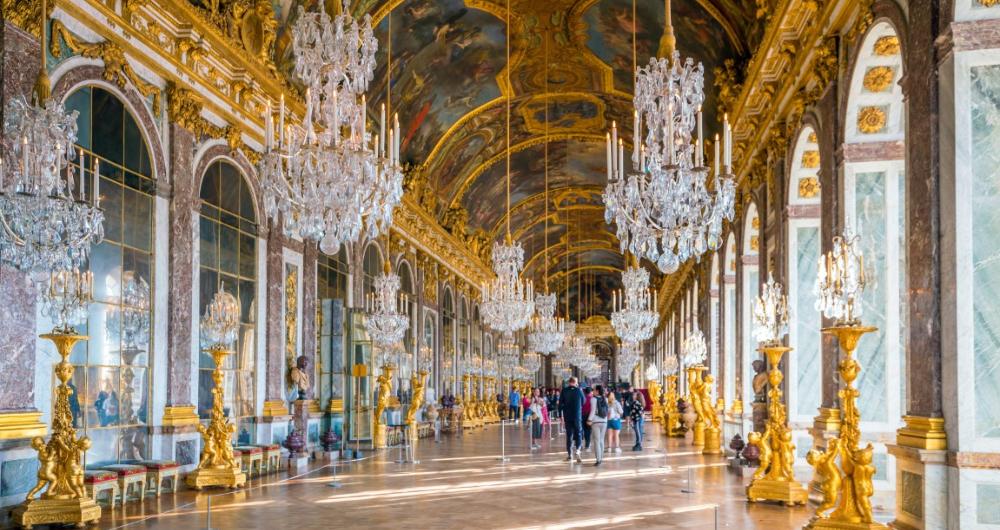In This Article
Want to step into royal history and stunning gardens? Head to Versailles! Just outside of Paris, Versailles is home to one of the most magnificent palaces in the world. But beyond the grandeur of the Château de Versailles, this elegant town offers charming streets, bustling markets, classical French cuisine, and serene parkland. It’s an ideal blend of history, culture, and beauty in the heart of Île-de-France.
Versailles, France Highlights:
- Tour the Château de Versailles: Explore the Hall of Mirrors, Royal Apartments, and the opulent architecture of France’s most famous palace.
- Stroll the Gardens of Versailles: Wander among fountains, sculptures, and flowerbeds laid out in perfect symmetry across hundreds of acres.
- Visit the Grand Trianon and Petit Trianon: Discover Marie Antoinette’s private retreats tucked into Versailles’ vast parklands.
- See the Musical Fountain Show: Time your visit with this seasonal spectacle where fountains dance to classical music (April–October).
- Explore the Notre-Dame Market: One of France’s oldest markets, perfect for sampling local cheeses, charcuterie, and fresh produce.
When I like to visit Versailles, France
The best time to visit Versailles is from April through October, especially when the palace gardens are in full bloom and the Musical Fountain Shows are active. Spring and early fall offer mild weather and fewer crowds compared to peak summer months.
Tips for getting to Versailles, France
- By train: From Paris, take the RER C line to Versailles Château Rive Gauche station (about 45 minutes); the palace is a 10-minute walk away.
- By car: Versailles is about 40 minutes southwest of Paris via the A13 motorway (note: parking near the château is limited).
- By tour bus: Many day tours operate from Paris, including skip-the-line palace access and guided garden walks.
Where I like to stay in Versailles, France
- Waldorf Astoria Versailles – Trianon Palace – A luxurious 5-star hotel bordering the palace grounds, featuring a Michelin-starred restaurant and spa.
- Hôtel Le Versailles – Elegant rooms and prime location just steps from the Château gates.
- Les Apparts de l’Oncle Louis – Stylish, self-catering suites ideal for longer stays or travelers seeking home-like comfort.
Best Things to Do in Versailles, France
1. Wander Through Majesty at the Château de Versailles

© Sergii Figurnyi/stock.adobe.com
The Chateau de Versailles (Palace of Versailles)
is a spectacular French Baroque complex and former royal residence that is famous for its beautiful architecture and turbulent political history. Located about 16 miles outside of Paris in the department of Yvelines, in the region of Île-de-France, the palace was a principal royal residence of France from 1682 until the start of the French Revolution in 1789. The castle is surrounded by exquisitely manicured gardens and grounds and has a large boating lake known as the Grand Canal, which are all free to the public. Take a picnic along in the summer and relax beneath the trees or hire a rowing boat and head out on the lake.
Place d'Armes Versailles, Île-de-France, 78000, France
2. Stroll the Timeless Elegance of the Gardens of Versailles
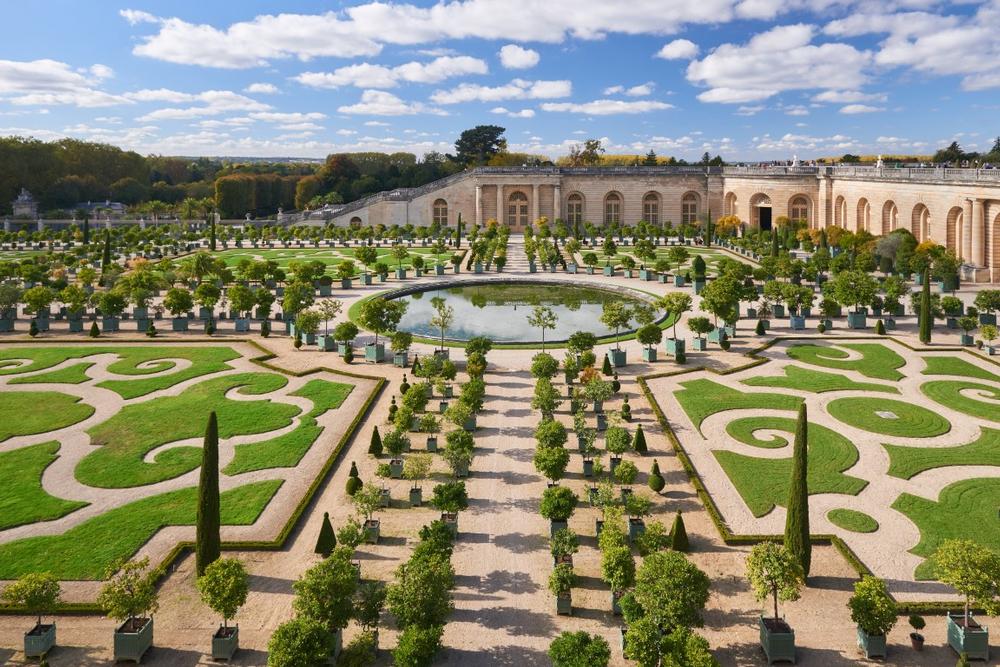
© Alvydas/stock.adobe.com
Spanning 800 hectares around the Château de Versailles, the Gardens of Versailles are a spectacular sight to behold. Designed by the renowned architect of the time, André Le Nôtre, the magnificent gardens took over 40 years to complete and feature exquisitely landscaped terraces, meticulously manicured lawns, rare flower gardens, bosquets (groves), and an Orangery with more than 1,000 boxed orange trees. The gardens also feature many ornate sculptures, water fountains, and parterres (reflecting pools), and dazzling water shows are held throughout the summer. Forming a backdrop to the gardens is the Grand Canal, a 5,450-foot long lake that took 11 years to complete and hosted the King’s fleet of vessels in the summer.
Place d'Armes Versailles, Île-de-France, 78000, France, Phone: +3313083-78-00
3. Escape to Tranquil Beauty at the Grand Trianon
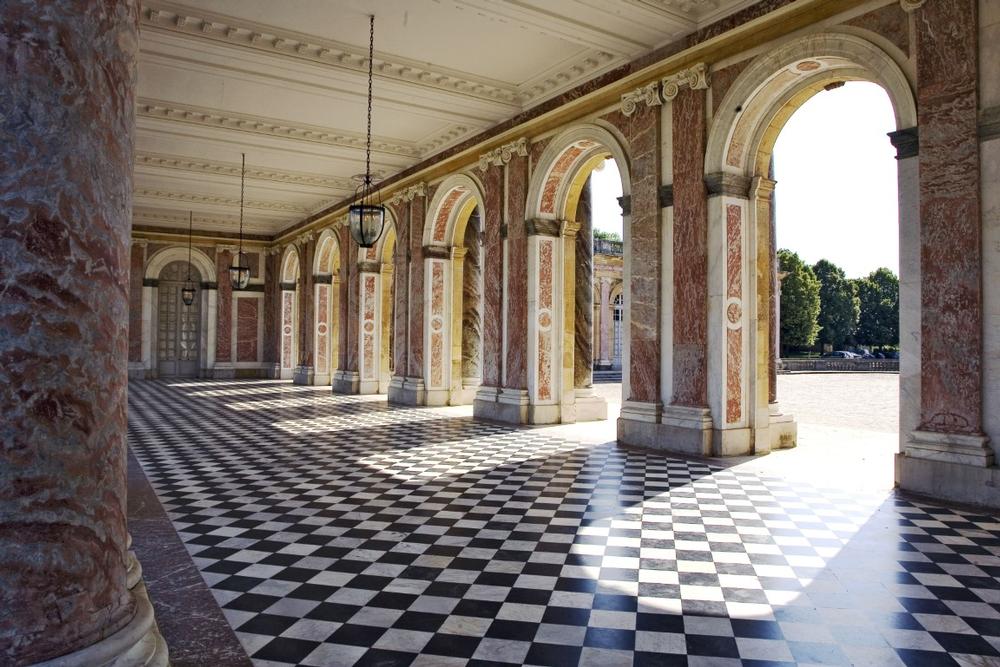
© JONATHAN/stock.adobe.com
The Grand Trianon is an elegant pavilion on the outskirts of Versailles that served as a place of refuge for the monarch and a secluded retreat for him to be alone with his mistress, Madame de Montespan. Designed by Louis Le Vau and built by Jules Hardouin-Mansart in 1687, the beautiful balustraded building overlooks enchanting French-style geometrical gardens with landscaped terraces, blooming flowerbeds, green shrubs, and fragrant orange trees. Surrounded by a thick forest, the secluded palace allowed the King to escape from the drama of court. Today, the pavilion is part of the French Republic's presidential residence and hosts foreign officials.
Porte Saint-Antoine, Versailles, France, Phone: +33-1-30-83-78-00
4. Feel the Drama Rise at the Royal Opera of Versailles
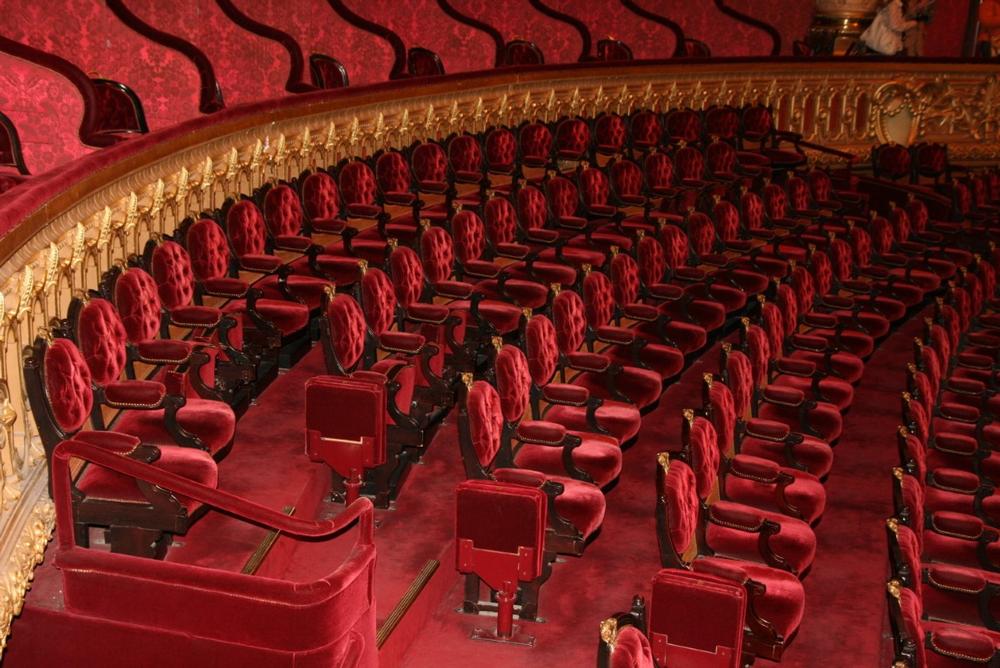
© Lotharingia/stock.adobe.com
The Royal Opera of Versailles (Opera Royal de Versailles)
is a magnificent opera house and theater in the North Wing of the Palace of Versailles that can accommodate 1,200 for opera, stage plays, or orchestral events. Designed by Ange-Jacques Gabriel, the theater, also known as the Théâtre Gabriel, was completed in 1770 and was built out of wood that was painted to resemble marble. The wooden interior creates excellent acoustics and the theater can be used for stage performances or grand balls with a full orchestra. The Royal Opera of Versailles was inaugurated in celebration of the marriage of Marie Antoinette to the future Louis XVI.
4 Avenue de Paris, Versailles, Île-de-France, 78000, France, Phone: +33-1-30-83-78-89
5. Step Into Sacred Grandeur at Saint-Louis de Versailles Cathedral
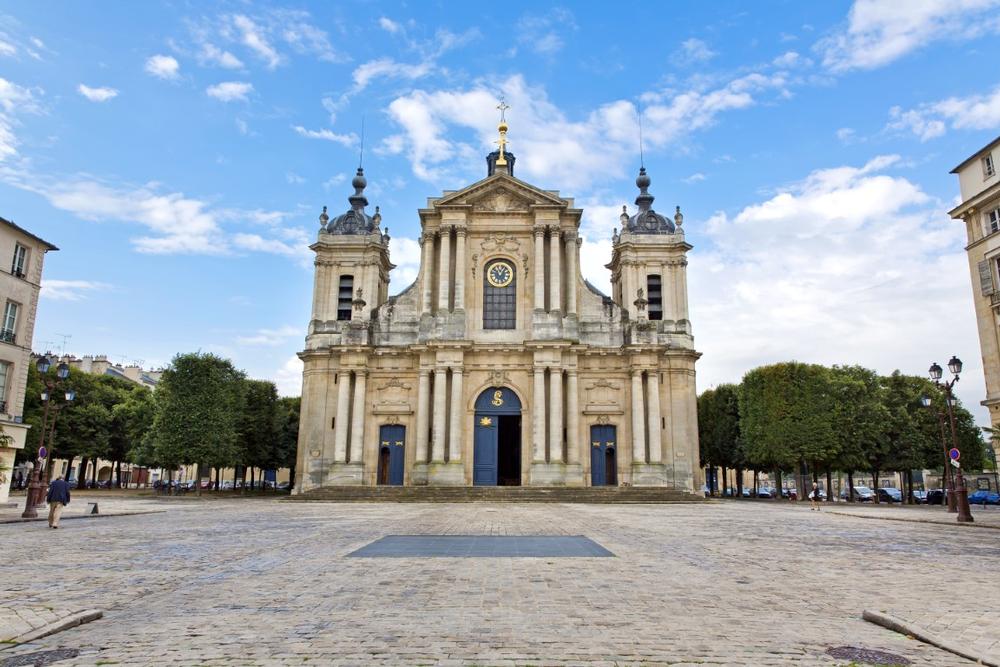
© lapas77/stock.adobe.com
The Saint-Louis de Versailles Cathedral (Cathedrale Saint-Louis de Versailles) is a beautiful Roman Catholic church and a French national monument. Designed by Jacques Hardouin-Mansart de Sagonne as a simple chapel, the edifice was transformed into a church by King Louis XV in 1740 and officially became a cathedral after the French Revolution. Significant architectural features of the cathedral include a 213-foot-high bulb-shaped dome topped with an arrow and ornate Baroque interiors with Corinthian columns, engraved moldings, and sculptures, cornices, and a marble altar. Today, the Cathedral is the seat of the Bishop of Versailles and has a collection of beautiful period artworks.
4 Place Saint-Louis, Versailles, France, Phone: +33-1-39-50-40-65
6. Reflect on Power in the Hall of Mirrors

© f11photo/stock.adobe.com
The Hall of Mirrors is a magnificent hall spanning 240 feet in the center of the Palace of Versailles that is lined with hundreds of mirrors. Connecting the Grand Apartment of the King with the Grand Apartment of the Queen, the hall features more than 350 mirrors lining the walls, 17 mirror-decorated arches, 17 gilded and arcaded windows, and elegant crystal chandeliers, creating a spectacle of glistening crystal and gold. Built between 1678 and 1684, the hall not only served as a daily meeting area and passageway between the two apartments but was also the site of many historical events such as the signing of the Treaty of Versailles in June 1919.
Place d’Armes, Versailles, France, +33-1-30-83-78-00
7. Lift Your Gaze in Awe at the Royal Chapel

© dunhill/stock.adobe.com
The Royal Chapel is a beautiful Gothic-style chapel in the Palace of Versailles that was built in 1689 by King Louis XIV. Designed by Jules Hardouin-Mansart, the chapel features two levels and the French kings would sit on the upper floor to show themselves as God’s lieutenants. The chapel has exquisite Baroque interiors with monumental pillars, marble altarpieces and flooring, massive sculptures, and illustrious paintings on the ceilings and walls. The wedding of the future Louis XVI and Marie Antoinette took place in this chapel, and today it is used as a venue for private events and functions, and musical concerts.
Château de Versailles, Versailles, France, +33-1-30-83-78-00
Activities and Attractions for Couples:
8. Discover Quiet Devotion at the Church of Notre-Dame de Versailles
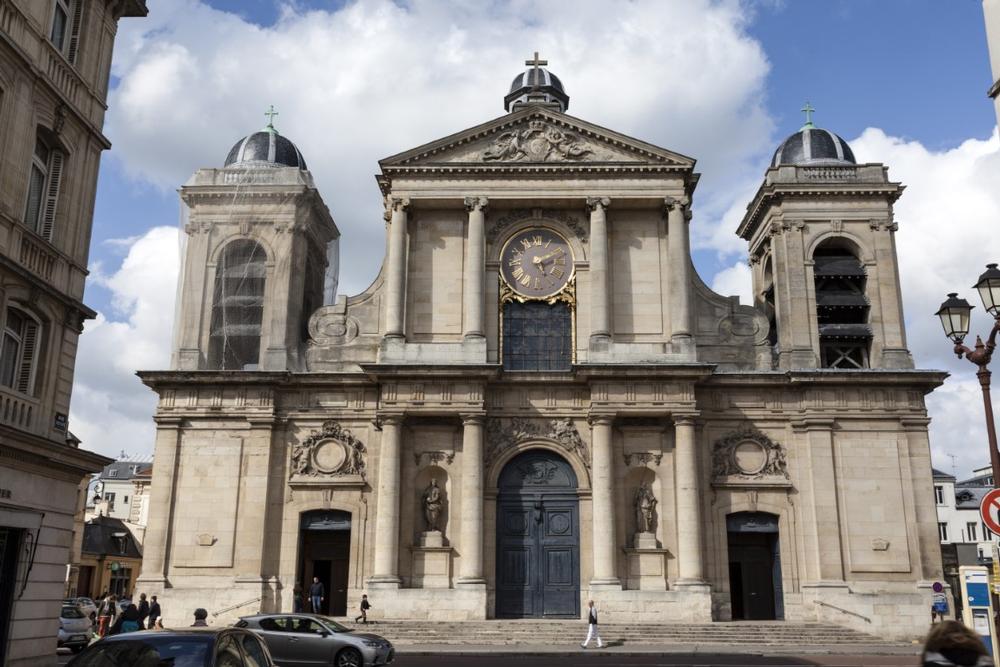
© oleg_ru/stock.adobe.com
The Church of Notre-Dame de Versailles (Notre-Dame de Versailles)
is a Roman Catholic church in the Notre-Dame area of Versailles. The area of Notre-Dame was established by Louis XIV to adorn the landscapes around the Palace and the Church was built in 1686 to serve the needs of the growing town. Constructed in the Ne-Classical style, the small church boasts elaborate floor and ceiling designs and houses beautiful sculptures by Noël Jouvenet and Pierre Mazzeline. The Church of Notre-Dame de Versailles is classified as a historical monument, and until recently, registered all births, deaths, and marriages of the French royal family.
2 Rue Baillet Reviron, Versailles, France, Phone: +33-1-30-97-69-70
9. Find Marie Antoinette’s Refuge at the Petit Trianon

© Delphotostock/stock.adobe.com
The Petit Trianon is a small château based within the park of the Grand Trianon that as built by Louis XV for his mistress, Madame de Pompadour. Designed by Ange-Jacques Gabriel, Petit Trianon was constructed between 1762 and 1768 in the Rococo style with four thoughtfully designed façades, grand marble Corinthian columns, elegant woodwork décor, and ornate embellishments. The château is surrounded by beautifully manicured formal French gardens with views over the former botanical garden of the king. The Petit Trianon was later given to Queen Marie Antoinette by King Louis XVI for her enjoyment and it became a refuge for her to escape from her courtly responsibilities.
78008 Versailles, France, Phone: +33-1-30-83-78-00
10. Taste Local Life at the Versailles Markets

© pchancel/stock.adobe.com
The town of Versailles hosts an array of bustling farmer’s markets that have a rich history dating back to the 17th century. The town has open-air markets in the 1700s until they were replaced by a covered market in 1841, one which is still in use today. Several markets flourish in the town, including the Market of Notre Dame, which is the largest outdoor farmers’ market in the Île-de-France region and offers everything from frog’s legs to freshly baked brioche and homemade cheese. The Jussieu-Montreuil market sells high-quality organic produce, such as fresh fruit, vegetables, herbs, and organic milk and cheese.
Versailles' Markets
, Versailles, France
Where I Like to Eat in Versailles, France
- Ore – Ducasse au Château – Elegant fine dining from Alain Ducasse located inside the palace, with regal views and contemporary French cuisine.
- Chez StefS – Cozy and modern French bistro with seasonal menus and excellent wines, near the palace gates.
- La Table du 11 – Michelin-starred dining in the heart of the city offering inventive takes on classic French flavors.
My favorite local events:
- Versailles Musical Fountain Shows (April–October) – Gardens come alive with music and water displays on weekends and select evenings.
- Fêtes Galantes at Versailles (May) – A costumed ball inside the Hall of Mirrors that brings the court of Louis XIV back to life.
- Versailles Night Fountain Shows (Summer Saturdays) – The gardens sparkle with lights, music, and fireworks in an unforgettable spectacle.
My favorite day trips within 30 Minutes of Versailles, France:
- Paris (30–40 min by train) – Visit world-famous landmarks like the Eiffel Tower, the Louvre, and Montmartre.
- Sèvres (20 min) – Explore the Cité de la Céramique, France’s national porcelain museum.
- Saint-Germain-en-Laye (25 min) – Tour another royal château and enjoy forested parks and sweeping Seine views.
- Giverny (just over 30 min by car) – See Claude Monet’s home and gardens, which inspired his famous Water Lilies paintings.
- Bois de Boulogne (30 min) – Walk, row, or picnic in this vast green park on the western edge of Paris.
Plan Your Trip


